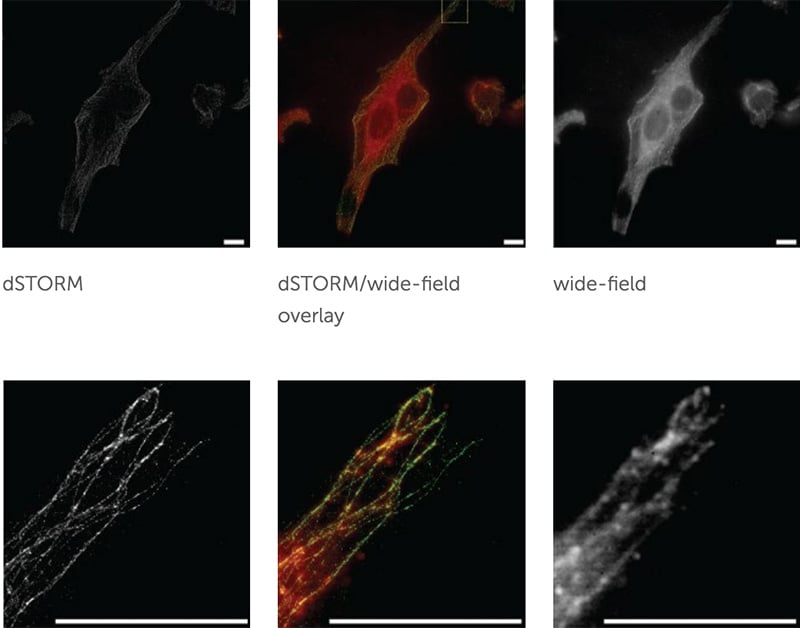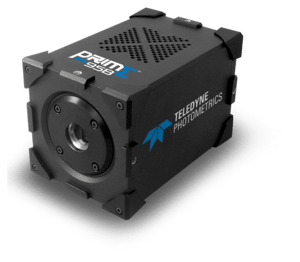STORM & Photonics
Prof. Paul French
Photonics Group, Physics Department, Imperial College London
Background
The Photonics Group in the Physics Department at Imperial College London develops instrumentation for multidimensional fluorescence imaging - spanning a wide range of applications, from super-resolved microscopy through automated fluorescence lifetime imaging for high content assays to endoscopy and optical tomography.
The availability of Scientific CMOS cameras has been transformative for their research because the technology provides unprecedented imaging performance with high resolution and high frame rates. The team particularly uses Scientific CMOS cameras for localization and light sheet microscopy.

NIH3T3 mouse embryonic fibroblast, starved overnight and treated with 1μm Trichostatin A for 4h prior to fixation. Cell is stained by anti-acetylated tubulin with an Alexa Fluor 647 secondary antibody. Using a Cairn OptoTIRF system, 5000 image frames were taken with a 30ms exposure time which composed 2768763 individual localisations. Mean uncertainty is 11.54 nm. (Scale bars are all 10μm)
Challenge
STORM [i, ii] for super-resolved microscopy is a particular interest and the team recently published an approach using low-cost diode lasers [iii]. "Our goal is to develop instruments that provide state-of-the-art performance while reducing the cost where possible so that more users are able to access such advanced imaging capabilities," shared Professor Paul French.
The Prime 95B camera is specified to provide >95% quantum efficiency, giving us the advantages of Scientific CMOS [sCMOS] with fantastic sensitivity.
Paul French
Solution
Scientific CMOS cameras are relatively cost effective compared to EMCCD cameras and they had already been incorporated into the team's STORM system. The group has since started using the Prime 95B.
French explained, "Since the achievable resolution is a function of the number of photons detected, we were excited to learn about the back-illuminated Scientific CMOS camera from Photometrics. The Prime 95B camera is specified to provide >95% quantum efficiency, giving us the advantages of Scientific CMOS with fantastic sensitivity."
When the group made a comparison of images taken with the Prime 95B and a standard Scientific CMOS camera, they were immediately impressed with the increase in signal to noise.
French concluded, "We look forward to implementing the Prime 95B camera in the new STORM microscopy platform that we are currently developing."

Learn More About The Prime 95B
References
- i M. J. Rust, M. Bates, and X. Zhuang, Nat. Methods 3, 793-796 (2006).
- ii M. Heilemann, S. van de Linde, M. Schuttpelz, R. Kasper, B. Seefeldt, A. Mukherjee, P. Tinnefeld, and M. Sauer, Angew. Chem. Int. Ed. 47, 6172-6176 (2008).
- iii K. Kwakwa, A. Savell, T. Davies, I. Munro1 S. Parrinello, M.A. Purbhoo, C. Dunsby, M.A.A. Neil and P.M.W. French,J. Biophotonics 9 (2016) 948-95, DOI 10.1002/jbio.201500324